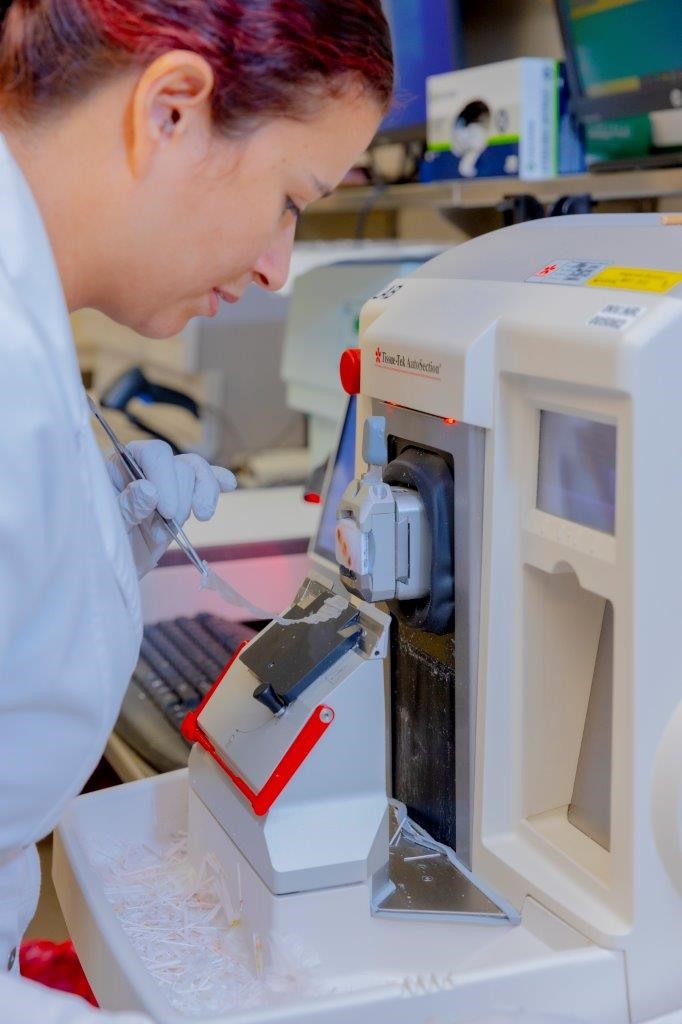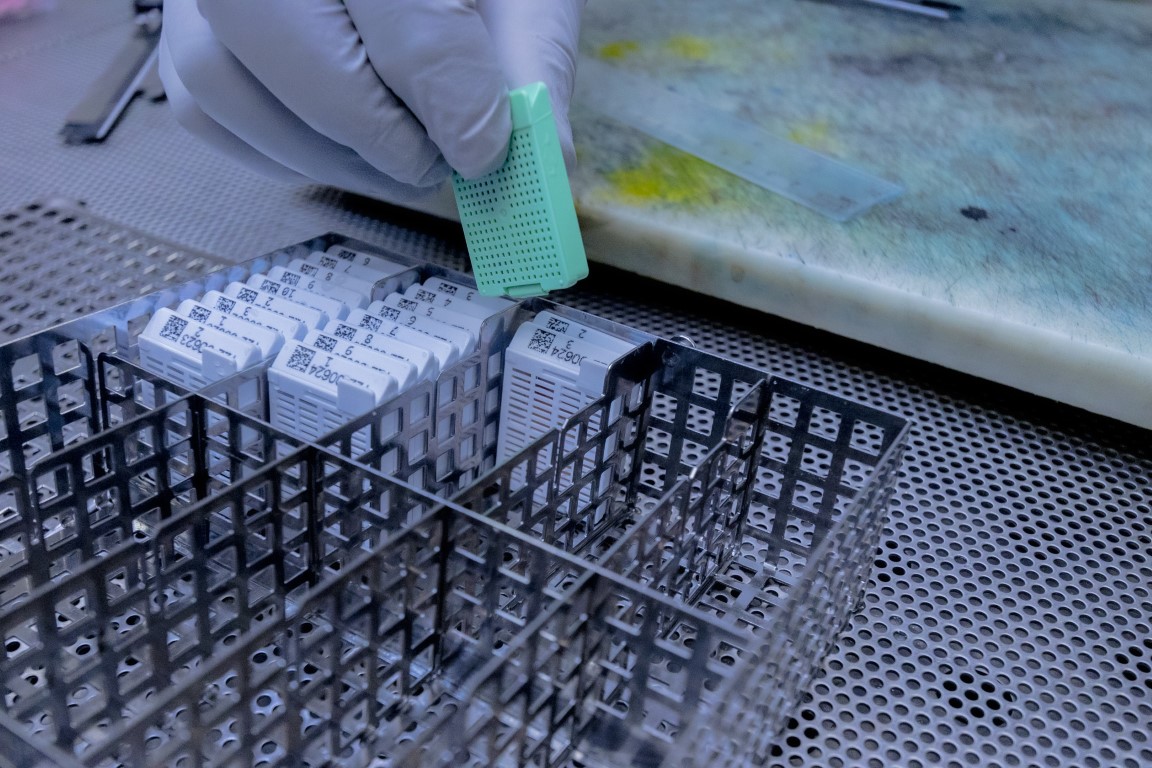Pathology


The department of pathology is the department in which, by means of a microscope, a diagnosis is made on material obtained from a patient.
There are 3 subdivisions in the department:
- Histology is where tissue is prepared and stained so that it can be seen through the microscope
- Cytology is where individual cells are prepared and stained so they can be seen through the microscope
- Immunohistochemistry where the identification of antigenic determinants of specific substances (proteins) by the application of antibodies to histological sections.
The tissue received in the department is sent by doctors who do surgery as:
Surgeons send organs or part of it removed from tumors which can be benign, malignant, or inflamed organs such as the appendix or gallbladder.
Gynecologists send for example a partial or complete uterus removed for benign or malignant tumors or curetting to diagnose irregular bleeding. But also in cases of birth, if the afterbirth looks abnormal or in case of stillbirth.
Dermatologists send in samples when they remove moles or other types of skin tumors.
Tiny parts of organs can be removed, which is called a biopsy. The size of a biopsy varies between 1 mm. and 5 mm.
The profession of a pathologist is not only about the post-mortem, the investigation of a body after its death. Indeed it is part of the work of a pathologist. It should be split into two kinds. First on request of doctors or the family of the diseased who wants to know the reason for death. This is called a medical post-mortem. The second is on request of the Justice Department which wants to be sure that a dead body found is of natural or unnatural death and in case of a violent cause of death. This is called a forensic post mortem.
